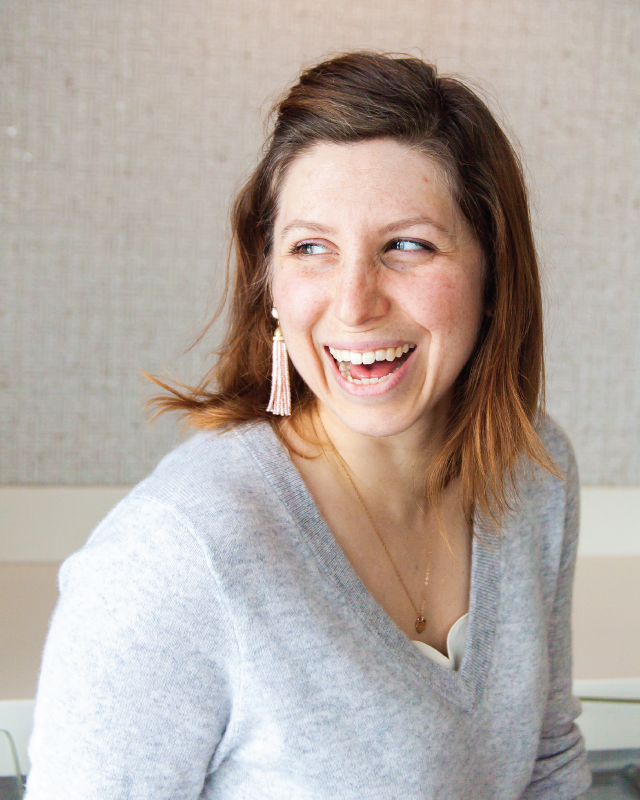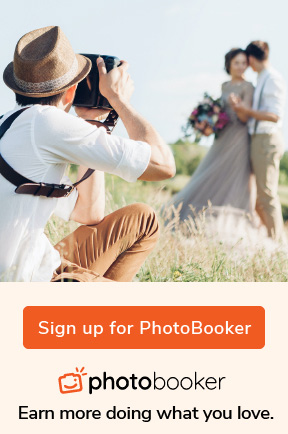So you’ve been shooting for friends and family for a while now, and are feeling confident enough to start charging for your sessions? If so, I’ve totally been there. Or maybe you’ve decided your stunning landscapes deserve a chance to adorn people’s walls and you need to determine how to price your wall art? No matter your genre, determining the right pricing can seem overwhelming. How do you know what’s right for you at this point in your journey?
First, let’s be honest; as you’ve probably realized, there’s no magic one size fits all price. What you charge depends mostly on the following 5 factors: location, experience, type of client, time invested, and expenses.
How to determine the price range in your area
Before you set your price, it is a good idea to find out the range in your area. This doesn’t pre-determine your pricing, but it’s a good indicator of what potential clients will actually pay for your services. Deciding what type of photography you enjoy shooting the most is also helpful. Passion makes you stronger! And better.
I’d like to think of this as the detective part of pricing. Doing a search on Google for “[insert your genre here] photographers near me” is a great place to start. Not everyone will have full pricing on their site (that’s a story for another day!), but looking at their Pricing/Packages/Investment pages should give you an idea of whether it’s common to collect a non-refundable deposit, what the “starting” price range is for packages or even their full session pricing.
Another great place to gather information is your local photography groups. There are often several on Facebook, either through Rising Tide Society or organized by experienced photographers who might be starting to offer workshops or taking on assistants and second shooters. Your local business bureau or Arts and Cultural Alliance may also have a group or listing of local photographers. PhotoBooker.com can be a great resource as well, since it allows you to search by location and genre.
Some photographers are still protective of their pricing – for a long time, prices were regarded as a Big Secret. In the last several years there’s been a shift in the industry to be more open about pricing and it’s very likely that there will be new or experienced photographers in your area who would be happy to chat about their price range.
Where do you fit into the Experience scale?
If you’re still with me, chances are you are “new to the industry.” However, that still doesn’t mean you and another “new” photographer should both charge the same price. First, consider how long you’ve been shooting and the mastery of your camera. Let’s use a scale from 1 to 5 to help.
Someone who is “1” on the number line would fit all or most of these descriptions, and charge in the lowest range while gaining experience:
- minimal client shoots
- some inconsistencies in their final edited images
- shooting in Automatic mode
- unfamiliar with directing clients during a session
- still finding their artistic “eye” for composition and use of light
Someone who is a “5” on the number line would often fit all or most of these descriptions, and charge the highest rates in your area, or even nation-wide:
- several years of experience
- very consistent editing and images, sometimes with minor variations to fit a client’s needs. (These photographers will often have a distinct “style” that distinguishes their images from others.)
- shooting in Manual and very familiar with the capabilities of their equipment
- direct clients or entire shoots to fulfill their artistic vision
- know what they want to shoot and have a plan, even if it is a flexible or loose plan, to use the light and environment for their images
Still using Automatic mode, but feeling pretty consistent in regard to Focus, Composition, and use of light? You might be between 1 and 2, or maybe heading toward the middle at 3 as you become familiar with all your camera has to offer!
We are usually our own harshest critics. If you’re not sure where you are, look through what you have in your portfolio of shoots so far, and pull out a few of your favorites. Can you see consistent use of light and skin tones? Compare your older images to your most recent. Do they show growth? When in doubt, ask a photographer or artist friend for some honest, constructive feedback.
I hesitate to delve too deep into the comparison game… However, looking at the image quality on homepages and portfolios when you are researching local photographers’ pricing can help give you an idea of where you fit on the scale.
Who is my ideal client?
Quite possibly one of the hardest things to determine, much like figuring out your “why.” Generally, when you’re starting out, your clients are most like you; this is where you have the greatest familiarity and experience. As you grow your business, you’ll need to decide who you enjoy working with, what range they can reasonably afford to pay, and if (or when) to increase your prices.
This is a highly personal choice. I know many wedding photographers who are near the top of the market; they love photographing high-end weddings and all that comes with that (island ceremonies, sunset boat cruises, voluptuous florals, live musicians). I also know many who have lots of experience but prefer to stay in the middle of the market; affordable for average-income couples who might splurge on a few things but also creatively use their skills to make their day special. There’s no “wrong” market – it simply needs to be the most artistically satisfying for you, or you’ll get burnt out.
If you aren’t technically ready for the high-end market just yet, shoot your lower-priced sessions with this market in mind to build your portfolio. Once you have enough images to show you’re capable of more, you’ll be in a good position to attract the clients you want!
How much time do I invest in each service?
Many artists struggle with valuing their time and process – and most photographers are artists. Your time has value. I remember the moment when this truly hit home for me. A photographer friend reminded me; What else would you be doing with your time if you weren’t shooting/editing/running your business? Would you be doing other paid work? Spending time with your children? Dinner with friends? Practicing self-care?
You may notice a few of these things don’t have a monetary value. However as much as I love spending time with clients and being a photographer, my photographic time needs to have a value placed upon it. Find what’s worth the missed family dinners and bedtime routines with my children in some cases. Say it with me! You. Are. Worth. It.
Unless you’ve timed yourself before, I highly recommend doing so on your next few jobs. When determining a service or product price, many forget to include the actual time invested outside the shoot. This will most likely include travel, client communications, editing, and uploading/gallery creation. The amount of time spent on each service will vary widely, depending on experience with editing programs, the type of service, and workflow. It’s easy to check the driving time in Google maps, but be sure to set a timer when you sit down at your computer to begin uploading your images to your hard drive, culling, and editing. For a longer shoot, it may take several hours to process them all! Note how many images you shot and how long it takes you to have them ready to share with your clients. This will give you an average idea of how much time to allocate for each job.
In general, culling the best images from each shoot, and then editing those, will take longer when just starting out. As you become more familiar with your editing software of choice, you’ll become faster. Another benefit of gaining experience is shooting more consistent images SOOC (Straight Out of Camera), which generally require fewer adjustments. You may want to time yourself again about every 6 months to a year for the first few years. If you’re spending less time on the same or better final edited product; Fantastic! This does not mean you should lower your prices – it actually indicates that your time maybe even more valuable due to your experience. After all, the point of starting a business is to make money doing something you love!
Expenses, aka Cost of Doing Business (CDB)
There are a lot of expenses in owning your own business – and it can be all too easy to forget about including them in your service pricing. Here are a few key things to keep in mind as you total your expenses (those with ** may not apply to your business for the first few years… or ever!)
- Accountant
- Association fees (if you decide to join your state or national PPA)
- Business license
- **Employees
- Workshops/Education
- Equipment and/or Props (Camera, lens, gear rentals, lighting equipment, etc)
- Internet
- **Rent
- **Utilities
- **Phone
- Products included in an individual service (digital files, prints, albums)
- Office supplies (editing software, such as an Adobe Cloud subscription for PS & LR, notebooks, pens, etc)
- Insurance (for Gear and/or a physical space if you are renting a studio/office)
- **Marketing & advertising
- Taxes
- Travel Mileage and/or other expenses
- Website (portfolio website and/or online photo storage for sharing client galleries and selling printed products)
Total up the annual cost for all applicable expenses, then divide that by the number of services you expect to book in a year. This number should be your absolute minimum price for a session – if you charge less, you’ll lose money. If you’re handy with formulas (or willing to look up the “how-to’s”) Google Sheets can be a great asset to sorting out your base price.
If you’re not a math wiz, hiring a professional accountant during Tax season is the best route to make sure you’re starting off on the right foot. However, online accounting programs (personally, I’ve used WaveApps for several years) can be a huge asset when it comes to keeping track of all your expenses and income in one place, whether you choose to use a tax professional or not.
As you go through each step to determine your pricing, remember that this is a starting place. While consistent pricing is generally good for business, if you find that you are at a different level after 6 months, make an adjustment. After all, you are a growing, changing human and photographer running a business. Like any other business, expenses can come up, your experience continues to add value to your work, and your prices should reflect those changes. Take a deep breath and dive in!

Photo credit Nina Cutter Photography
BIO
Amanda Whitegiver is a member of Zenfolio’s Support Team and the Owner/Photographer of Wild Orchard Studios photography in Southern Maine. A professional Lifestyle Family and Branding photographer for over 10 years, she’s also been a contributing writer and photographer for Maine Women Magazine since 2018. Amanda lives in the wilds of Maine with her husband, two daughters, and grumpy cat. If there’s such a thing as too much dark chocolate, she hasn’t heard about it.






